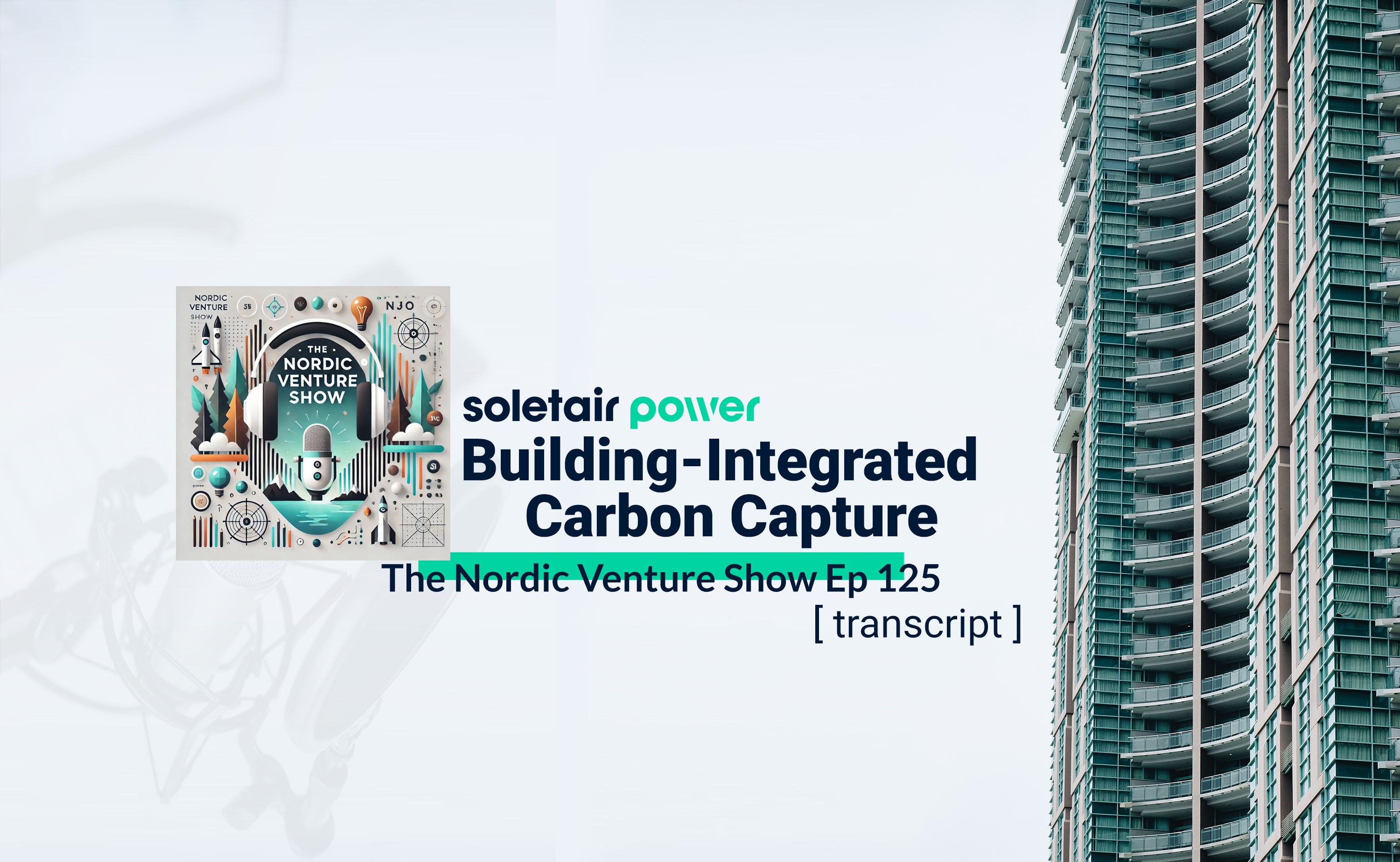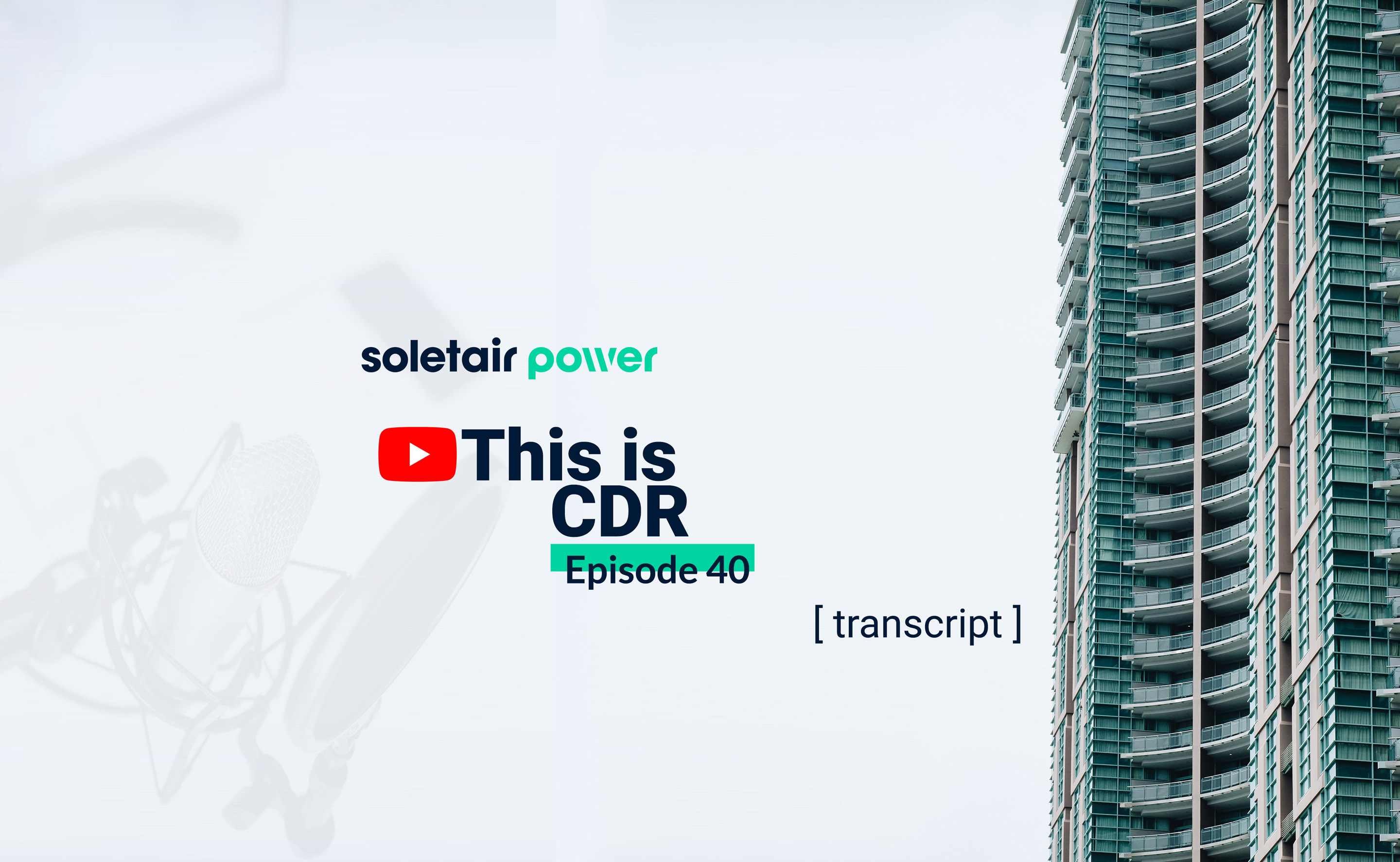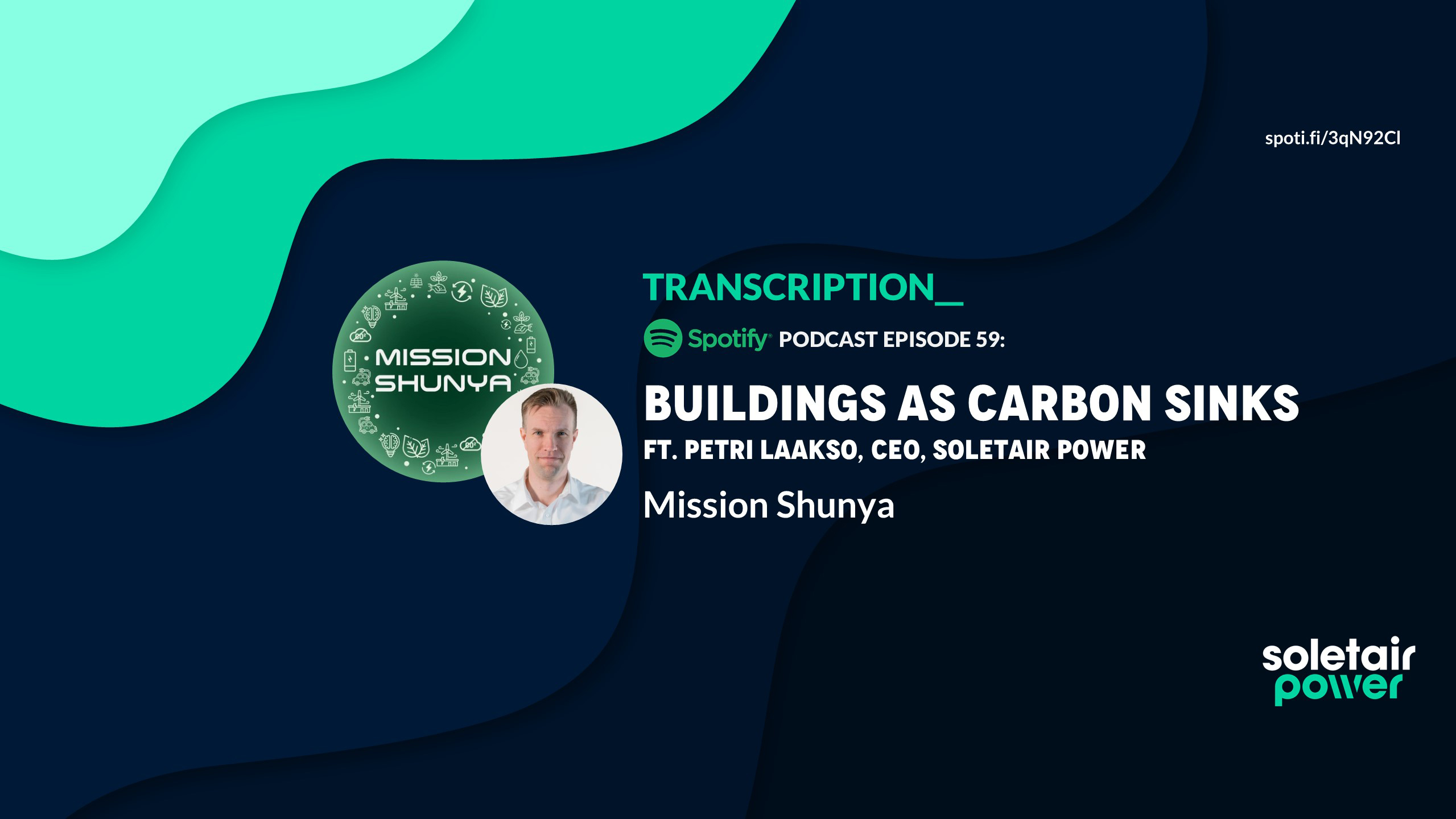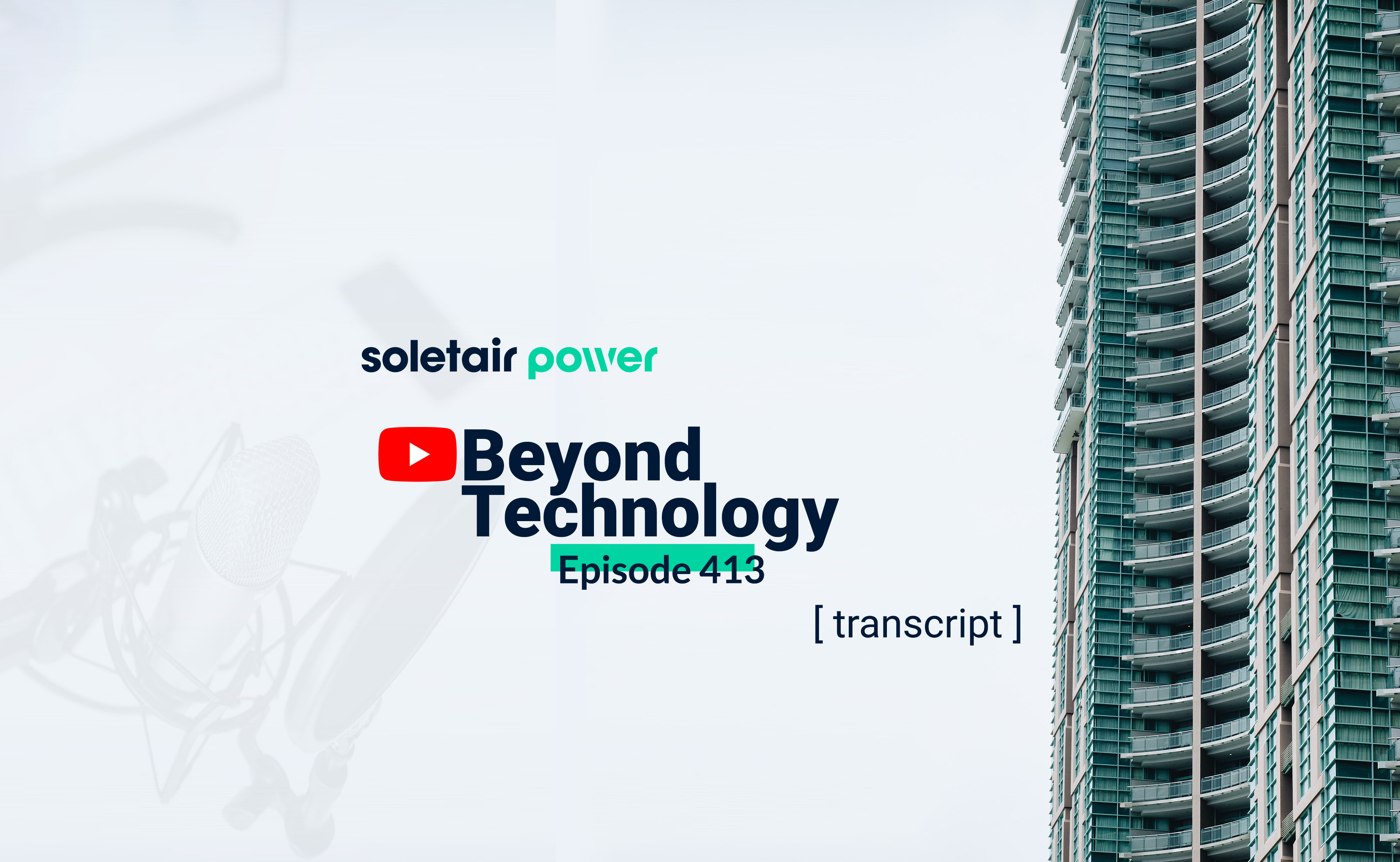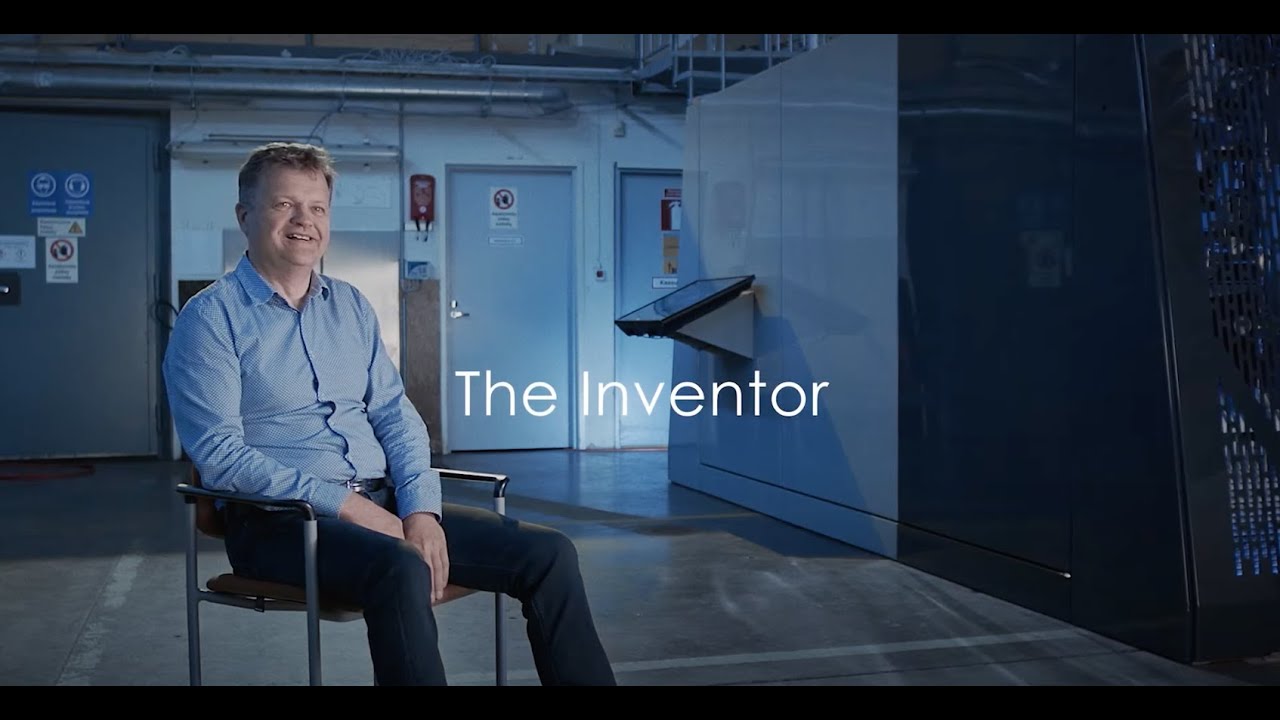Welcome to the Nordic Venture Show, your speed date with the hottest Nordic innovations and ventures. In this episode, our venture date is with Soletair Power, Building-Integrated Direct Air Capture.
…
Welcome to the deep dive. Today, we’re tackling something really, well, really interesting: how we might actually turn our buildings from, you know, climate problems into active solutions.
Yeah, it’s a fascinating angle.
You shared some info on a company, Soletair Power, and they’re doing direct air capture, but specifically looking at putting it in buildings.
Exactly. And, you know, for listeners like you who really value getting straight to the point on complex stuff and who enjoy those “aha” moments—guilty as charged, ha ha ha yeah—so this deep dive will really unpack how Soletair Power’s tech works, what its impact could actually be, and why it’s, frankly, a pretty big deal in the carbon capture world. We’ll try to break down the science clearly without getting lost in the weeds.
Perfect. And we’re drawing on Soletair Power’s own stuff—their website, tech pages, latest news—how they see buildings becoming carbon sinks. Okay, let’s jump in. What’s the basic science here? How are they actually grabbing carbon?
Well, fundamentally, it leverages a pretty well-understood chemical thing. Think about CO2, carbon dioxide. The carbon atom in CO2 has a slight sort of positive charge, and in chemistry, opposites attract, right?
Right, positive seeks negative.
Exactly. So, these slightly positive carbon atoms, they’re naturally drawn towards molecules that are, let’s say, electron-rich, molecules with a bit of a negative vibe, you could say,
Like tiny magnets. So, where do these electron-rich things come into Soletair’s system?
Ah, that’s where their special materials, the sorbent, come in. They’ve engineered these materials to be packed with these electron-donating groups, specifically things called amines.
Amines, okay.
So, when air flows over the sorbent, the CO2 molecules, because of that attraction, they get selectively pulled on to the surface. They stick. It’s a process called selective absorption.
Selective absorption. And so, it grabs the CO2, ignores the other stuff in the air, mostly?
Pretty much, yeah. It’s designed to be selective for CO2.
Okay, so the CO2 sticks to the sorbent. Then what? It can’t just pile up forever.
No, exactly. Right. And that brings us to their four-step cycle. First, you’ve got air being pulled in by the building’s normal ventilation system, the HVAC (Heating, Ventilation, and Air Conditioning).
Standard stuff.
Standard stuff. Second, that air gets passed through the sorbent, and the CO2 gets absorbed, like we said. Third, this is the clever bit: once the sorbent’s loaded up, they trigger what they call a regenerative transformation.
Sounds fancy. What does it mean?
It means they isolate that bit of sorbent, pull a vacuum, and gently warm it up. That combination—the heat and the vacuum—weakens the bond holding the CO2.
Ah, so it makes the CO2 let go.
Precisely. The CO2 gets released as a concentrated gas. And then the fourth stage is the carbon harvest.
Harvest, like picking apples?
Umm…sort of. They collect this concentrated CO2, and it’s ready for storage or potentially for use somewhere else. And, crucially, the sorbent is now empty, regenerated, ready to grab more CO2. It’s a cycle.
Okay, cycle makes sense. And they mentioned specific terms: amine-functionalized sorbent?
Yeah, that just means the sorbent material has these amine groups attached to do the grabbing.
And temperature vacuum swing absorption?
That’s just describing the whole process, using changes in temperature and pressure—the vacuum—to swing between adsorbing the CO2 and releasing it. TVSA, sometimes they call it
TVSA? Got it. Okay, that links into the bigger concept of direct air capture, DAC, right? How does this fit?
Yeah, DAC is exactly what it sounds like: grabbing CO2 right out of the ambient air using chemistry. And Soletair’s method is one way to do it. It almost always involves, you know, materials like their sorbent and fans to move the air.
So, the basic chemistry is the same across different DAC approaches, that attraction principle?
Fundamentally, yes. That slight positive on the carbon in CO2 getting attracted to something negative, electron-rich, and the capture material—the adsorbent or sorbent—that’s the core idea.
So, DAC isn’t some sci-fi concept. It’s based on real chemistry we understand.
Absolutely. There are other ways people are trying, like using liquid solvents instead of solid sorbents, but that chemical attraction is still key. Soletair Power’s solid sorbent approach has, well, potential advantages in energy use and handling.
And the separation part, how pure is the CO2 they get out?
It’s pretty effective. Their sorbents might grab a bit of water vapor too, initially, but when they heat it during regeneration, both CO2 and water are released. Then they just remove the water, and you’re left with, well, almost pure CO2.
Okay, that’s DAC generally. But the really unique thing about Soletair Power is where they’re doing it—inside buildings. Tell me more about this HVAC-integrated system.
Yeah, this is their kind of flagship idea. They have this CO2 capturing unit designed specifically to slot into a building’s existing HVAC system, the heating, ventilation, air conditioning. And it’s designed to be modular, sort of plug-and-play, which makes it surprisingly flexible for different buildings.
Plug-and-play carbon capture? That sounds almost too easy. What can one unit actually achieve?
Well, according to them, a single unit can pull out up to 20 tons of CO2 per year.
20 tons? How much is that, really?
They give a comparison: they say it’s like the CO2 absorbed by three hectares, which is what, 7.4 acres maybe, of a 30-year-old Nordic forest. So, it’s not insignificant for one box.
Wow, okay. And you could put more than one in a building?
Oh yeah, they reckon a typical commercial building might fit around 20 modules. So, doing the math, that’s like 400 tons a year.
Exactly, up to 400 tons per building per year, which, to give another comparison, they say is like the emissions from about 87 cars annually.
87 cars’ worth of CO2, just from one office building’s HVAC system?
Potentially, yes. Now, obviously, you need a lot of buildings doing this to make a global dent, but it shows the potential if it becomes widespread.
That’s quite something. And the fact it hooks into existing systems seems huge. What are the main benefits there?
Several big ones. First, you can retrofit it. It’s not just for brand-new constructions; you can add it to existing buildings.
That’s key.
Definiely. And the installation, they say, is pretty quick, like anywhere from a day to maybe 30 days, depending on how complex it is. The modular thing means you can scale it—start smaller, add more later if needed. It’s weatherproof. And they really emphasize the low environmental impact: water, heat, electricity use, the materials. The whole carbon footprint of the unit itself is meant to be low.
Right. And I think I read it could even save energy on the HVAC. How would that work?
Yeah, that’s an interesting side effect. Because it’s constantly pulling CO2 out of the indoor air—ah, the air we’re breathing inside, right—it means the building’s ventilation might not need to pull in as much fresh outside air quite as often to keep indoor CO2 levels down.
Because the Soletair unit is doing that job?
Exactly. And if you’re pulling in less outside air, you need less energy to heat or cool that air. So, potential energy savings.
So, it cleans the air, captures carbon, and potentially cuts energy bills. That’s quite a package. Did they mention where they’ve actually installed one?
They did. They put a system in at the Wärtsilä Sustainable Technology Hub. That’s in Vaasa, Finland, and it’s connected to a standard ventilation unit, handling about 3.3 cubic meters of air per second. The capture unit itself is roughly 3m by 3m by 3m, so, you know, about the size of a small room or a large shed.
Not enormous, considering what it does. And is it something someone has to babysit all day?
No, no, not at all. They stress it’s fully automated. It connects up to, you know, IoT sensors, the building management system, BMS. So, you can monitor it, operate it remotely online. It’s designed for city environments too. They say it’s got a near-zero noise level, important if it’s going in office buildings or apartment blocks.
Makes sense. Okay, so you capture the CO2, it’s concentrated. What happens to it then? Where does it go? It just sits in a tank?
Well, right now, Soletair says their current customers are mostly using the captured CO2 for R&D—research and development, testing things out, yeah. But Soletair is actively building partnerships for, you know, wider uses. They mentioned that Power-to-X project in Dubai, right, with Q Power and Wärtsilä, where they used the captured CO2 to make synthetic methane, e-methane. Power-to-X, turning CO2 into fuel.
That’s a whole other deep dive, maybe, but huge potential there, even with the efficiency challenges. And they mentioned carbon sinks. What’s that about?
A carbon sink is just, basically, a long-term storage place for CO2, keeping it out of the atmosphere. Could be deep underground in geological formations or maybe locking it into materials, like some types of concrete.
So, storage or utilization. This all really points to why we might need technologies like this, doesn’t it? What’s the bigger-picture view?
Well, they reference the IPCC, the big climate science body, Intergovernmental Panel on Climate Change. And the IPCC is pretty clear that hitting our climate goals, like limiting warming to 1.5°C, is going to require removing large amounts of CO2 from the air—carbon dioxide removal, CDR.
It’s not enough just to cut emissions; we have to clean up past emissions too.
That seems to be the consensus, yeah.
So, DAC, like Soletair’s technology, is seen as a crucial part of the toolkit. It’s not instead of cutting emissions—that’s still priority one—and it’s not instead of planting trees or restoring ecosystems. It’s alongside those things.
An all-of-the-above approach.
Pretty much. And DAC has some specific advantages. It doesn’t need huge amounts of land or water compared to some other methods. And, like Soletair Power highlights, you can put it right where the emissions often are—in cities—and potentially close to where the CO2 could be stored or used.
Okay, that makes sense. Now, we touched on it—cleaning the indoor air. That’s not just about emissions, is it? There are direct benefits for people inside.
Oh, absolutely. This is a really interesting angle. Soletair points to research, I think from Harvard, about how CO2 levels inside affect how well we think, our cognitive function.
Really? How much difference does it make?
Well, normal outside air is around 414 parts per million, ppm, of CO2 these days. Inside, it’s often higher, maybe 450 to 600 ppm, even in well-ventilated spaces.
Okay, still sounds low.
Yeah, but apparently, once you get up towards 1,000 ppm, people start to feel the air quality isn’t great. And the really striking finding they mention is that for every 400 ppm increase above 1,000 ppm, cognitive function scores can drop by as much as 20%.
20%? Just from higher CO2?
That’s what the research suggests. It’s not just about feeling a bit stuffy; it can actually make it harder to concentrate, make decisions.
Wow. So, this system, by pulling CO2 out of the indoor air?
It’s not just fighting climate change; it’s potentially creating a healthier, more productive indoor environment, supplying CO2-lean air, as they put it.
Better thinking, maybe.
Cleaner air for a clearer head. Okay, now Soletair Power isn’t just doing this one building-integrated unit, right? I saw they had a few different things.
That’s right. The HVAC-integrated unit is a big focus—captures about 50 kilos of CO2 a day per unit, gets it up to 99% pure, links to the BMS—that’s core for buildings. But they also have that compact “fuel from thin air” unit, the one from Dubai, making methane. Then there’s a bigger, containerized plug-and-play unit for outdoor use, higher capacity.
Industrial sites, maybe?
Could be, yeah. And on the smaller end, they have an indoor productivity booster, like a portable air purifier but specifically for CO2 in a single room. And even just a desktop CO2 monitor, so you can see the levels yourself.
So, a whole range, from desktop to containerized. Seems like they’re aiming at lots of different building types too—offices, apartments.
Yeah, they list multi-family apartments, offices, industrial sites, even data centers. Pretty broad applicability.
Okay, so if you had to sum up the key advantages, the unique selling point of their approach, what would they be?
Well, a few things stand out. They really push the clean and environmentally friendly angle. Their sorbent doesn’t have nasty chemicals—
That’s important.
Very. It’s patented technology, and it’s been proven in real projects, not just lab scale. The cost-efficiency angle, especially being able to retrofit existing HVAC, is a big plus.
It’s ripping everything out.
Exactly. It can run on clean energy sources, they claim it needs very little maintenance, and the sorbent lasts a long time, like over 10 years. And again, that modularity—easy to scale up, adaptable to different industries.
Sounds compelling. And they seem to be pretty busy lately—lots of news, partnerships.
Yeah, they’ve been active. They did that quirky “Carbon Ghostbusters” AI music video thing.
Ah, I missed that one.
Yeah, for climate action awareness. (Watch Soletair Power Carbon Ghostbusters on YouTube: https://www.youtube.com/watch?v=54d_M-2lt1w)
But more seriously, they’ve got partnerships for using the CO2, like with Liquid Sun for making aviation fuel and Carbonaide for carbon-negative concrete.
Using CO2 to make building materials. That’s neat.
It is. And they’ve been winning tenders, contracts. They mentioned an eighth win recently, a big HVAC-connected DAC project in Hungary.
Winning contracts suggests people are buying into it.
Definitely. They’ve got agreements with companies like AlCarbo in Hong Kong, Danica Pension in Denmark, consultants like Soren Jensen, HVAC specialists like Halton. They’re showing up at big events like Slush and COP28, getting noticed and getting recognition. They’re on the SET100 list, won awards like a PropTech Challenge in New York. And, crucially, they’re delivering systems to Danica Pension, to Vantaa in Finland for pure CO2 supply, to universities like LUT, Wärtsilä obviously, ZBT in Germany, Expo 2020—these aren’t just prototypes anymore.
They’re actually installing this stuff out in the real world.
Exactly, which is a big step for any new technology in this space.
It really is encouraging to see it move from concept to reality.
Okay, so let’s try and wrap this up.
To recap for everyone listening, you should now have, well, a much clearer picture of how Soletair Power is tackling carbon emissions. They’re basically turning buildings into carbon capture devices.
Right. Using that clever approach of integrating direct air capture right into the HVAC systems we already have.
And it offers this modular, efficient way to pull CO2 out of the air—potentially cost-saving too—and it boosts indoor air quality at the same time.
Yeah, the science behind it, that basic chemistry of attraction, is pretty neat. And the potential for using this widely in cities—it feels significant.
It really does. Which leads us to maybe a final thought for you, the listener, to chew on. Buildings are a huge source of global emissions, right? So, what if—what if this kind of technology just became standard? Like, every new building, every major renovation project had to include something like this. How quickly could our cities flip from being these huge emission sources to actually being part of the climate solution, actively cleaning the air around us?
It really makes you think differently about the buildings we live and work in, doesn’t it? Seeing our everyday infrastructure actually working to, well, help heal the planet.
A provocative thought indeed.
……….
Thanks for listening to the Nordic Venture Show. Don’t forget to subscribe and stay tuned for more stories of innovation from the Nordics.
🎧 Listen to this podcast episode created by here:
- Apple Podcasts: https://podcasts.apple.com/us/podcast/125-soletair-power-building-integrated-direct-air-capture/id1776764773
- Spotify: https://open.spotify.com/episode/5RCujNMM08k5Ci4tV3W2wC
- Amazon Music: https://music.amazon.ca/podcasts/b59bdd3e-c6f4-442e-b6f4-c804b33748cd/episodes/7eb4c551-830e-4a03-a49d-644825a497ba
- YouTube Music: https://music.youtube.com/watch?v=8zZHJ9v1vDQ
🎧 Find all the podcast appearances of Soletair Power here:
https://linktr.ee/soletairpowerpodcasts

